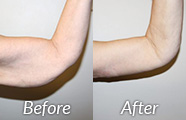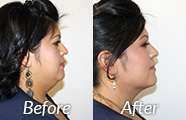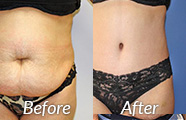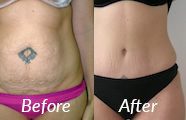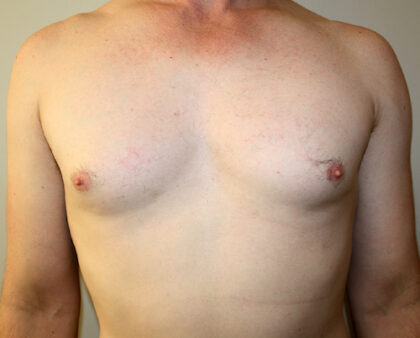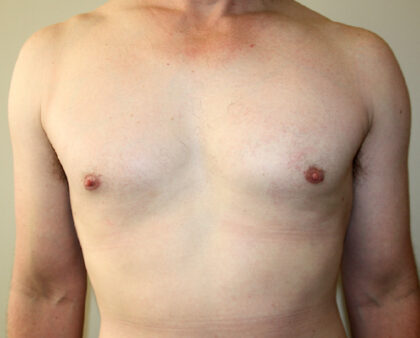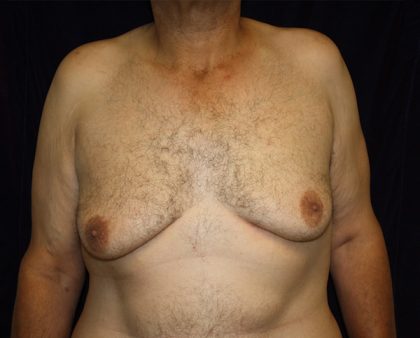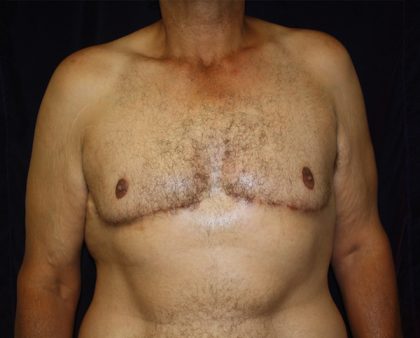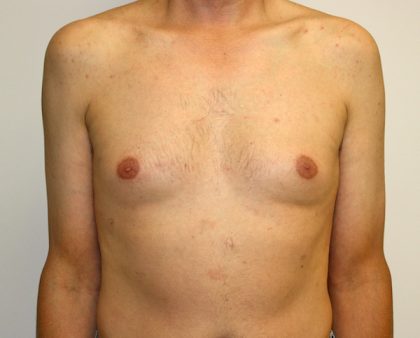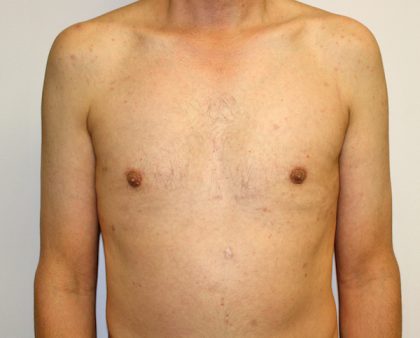Male Breast Reduction Surgery
Conveniently located to serve the areas of Santa Monica, Beverly Hills and Greater Los Angeles

Male breast reduction is a surgical way to help men achieve a more masculine, better-defined physique. Either caused by excess fat or excess breast tissue, male breasts can be a cumbersome condition for men of all ages. Diet and exercise alone can help some men see a reduction in the projection and size of their breasts. But, for many men, an increase in either of these health-improving methods does little if any good. To sculpt the appearance of better-contoured pectoral muscles, Dr. Michael Zarrabi and his staff at our Santa Monica and Beverly Hills offices use different body contouring approaches to help his male patients achieve their desired appearance. If you struggle with male breasts and don’t know where to turn for help and guidance, schedule a personal consultation at our Southern California offices. Here, we will answer any questions you may have and construct your personalized treatment plan. To reach our front offices directly, please call (310) 584-9990.
Contents
Before and After Photos
About Male Breasts
Male beauty standards have persisted for hundreds of years. From Greek and Roman statues with royally defined abdominal muscles to nature’s perfect measurements as depicted in da Vinci’s Vitruvian Man to modern-day action stars showcasing a chiseled physique while saving the world – again. Typically, the idealized physique for men is one where muscles pop from their arms, chest, and abdomen. The lines between muscles are well defined (and well-lit) while the hero battles through the movie’s climax. But, as we get older, this idealized physique becomes hard to obtain – and even harder to keep.
About Gynecomastia
Gynecomastia is a condition that affects around 60% of men.[1] This condition is not caused by a proliferation of fat cells in the breast, but rather glandular breast tissue. Because the enlarged glands cause the projection, diet and exercise cannot remedy gynecomastia. Typically, men will see an increase in gynecomastia during either puberty or andropause. During these two seasons in a man’s life, his hormones work hard to return to homeostasis. By increasing estrogen, or decreasing testosterone or androgen, the mammary tissue can swell and cause gynecomastia in one or both breasts.[2] Other causes of gynecomastia are things that affect a man’s endocrine system and throw his hormones off balance. This includes anabolic steroid use. Research into men of varying ages who use unregulated and unprescribed anabolic steroids shows 52% of them experiencing gynecomastia as a result.[3]
Pseudogynecomastia

For some men, however, the appearance of their breasts is a result of fat cells located on top of healthy breast tissue. This condition is called, aptly, pseudogynecomastia. For many men, diet and exercise can diminish the size of these breasts, but in some cases, surgical means are required. One way to tell whether you have gynecomastia or pseudogynecomastia is to feel around the areola. Gynecomastia is oftentimes painful and tender to the touch. The best way, however, is to schedule a personal consultation with a board-certified plastic surgeon like Dr. Zarrabi.
Surgical Solutions
For those interested in seeing their breasts replaced with a flatter, more masquline chest, we have two different approaches for treatment. Since both are surgeries, both will require consultation with Dr. Zarrabi.
Gynecomastia Surgery
For those with diagnosed gynecomastia, there is a specific surgery to extract the projecting glandular tissue from the patient’s breasts. Dr. Zarrabi begins by marking your chest with surgical lines to address each facet of the projected tissue. Once the appropriate anesthesia is administered, Dr. Zarrabi makes an entry incision in the areola. From here, he can carefully cut around the projected tissue and remove it through this tiny hole. Scarring after gynecomastia surgery is minimal because the coloration of the areola masks the entry site. Once he is completed and has removed the projected tissue, he will suture the wounds closed and wrap your chest in a surgical garment to promote healing.
Liposuction
For those with pseudogynecomastia, liposuction can achieve their desired aesthetic appearance. By making a discreet incision concealed in either the armpit or masked around the edges of the areola, Dr. Zarrabi moves a thin tube called a cannula back and forth through the fatty tissue. Dr. Zarrabi uses a tumescent liposuction approach to extract more fat than what traditional liposuction is capable of doing. In addition to this advanced technique, Dr. Zarrabi utilizes a special cannula that vibrates the fat lobules loose from their connective tissues. This feature allows for even more fat extraction during your procedure. After he has removed all the necessary fat around your pectoral muscles, he will suture the entry site closed. For those with diagnosed gynecomastia, liposuction may be included in your personalized treatment plan.
Candidates
Since weight changes and hormones fluctuate throughout all seasons of life, there is no set age for gynecomastia surgery. Some young men come to see us in their early twenties and report having enlarged breasts since puberty that have never quite gone away. Other men come to us after finishing a cycle of anabolic steroids or a hormone-blocking medication that has disrupted their endocrine system. Men in their golden years come to us after having undergone andropause, looking for a return to their younger, leaner physique. Because all men’s bodies are different and age differently than others, please don’t hesitate to schedule a personal consultation with Dr. Zarrabi no matter your age or stage of life.
About Dr. Zarrabi
Dr. Michael Zarrabi has long been one of the most sought-after and respected plastic surgeons in Southern California. With his knowledge, expertise, and skills, Dr. Zarrabi has helped thousands of patients achieve their desired cosmetic appearance – and hundreds of men their dream physique.
Your Meeting With Dr. Zarrabi
We will begin your consultation with a brief new patient intake interview and a physical examination. Because both procedures for male breast reduction are general surgeries, you will need to be healthy enough to undergo surgery. You will need to be at a healthy, stable weight at the time of your procedure. During this time, we will also review your medical history and discuss any possible causes for your gynecomastia condition. We understand this condition might be a sensitive topic for some patients. Dr. Zarrabi handles each patient with the empathy and honesty that they deserve and is ultimately committed to your safety and satisfaction, so please let us know if you have any questions during any point of this process. Next, Dr. Zarrabi will carefully examine your chest and note any sensitivities, tenderness, or pain. He may also order an ultrasound to rule out any other conditions. He will then either diagnose you with gynecomastia or pseudogynecomastia. This diagnosis will dictate which procedure Dr. Zarrabi will perform to reduce the size of your breasts.
Preparation
Before you leave our care, we will schedule a time and date for your male breast reduction surgery and give you a list of preparatory steps that you should adhere to in the interim. These steps include:
- Stop taking blood-thinning medications such as ibuprofen, Advil, and aspirin. These medications thin the blood and cause excessive bleeding during your procedure.
- Stop smoking or taking any nicotine products. Nicotine constricts the blood vessels and hampers the body’s natural ability to heal after the surgery. Continuing to use nicotine during recovery may result in prolonged recovery time.
- Schedule a ride home. You will not be fit to drive yourself home from the surgery center, so please designate a caregiver to tend to your needs for the first day or two after surgery.
Recovery
After either gynecomastia surgery or liposuction, the breasts will be swollen and tender, but the troublesome tissue (either glandular tissue or fat) will have been removed. So, you will notice the results right away. It is critical to avoid strenuous activities for the first few weeks of recovery to not aggravate the sutures. During this time, as the swelling subsides, you notice a better-defined, more masculine chest. We will approve you for exercising and other strenuous activity during your follow-up appointments.
How Much Does Male Breast Reduction Cost in Southern California?
The cost of your male breast reduction will vary depending on your condition and what approach Dr. Zarrabi utilizes. If you are interested in financing your body contouring procedure, please be sure to check out our financing page. To reach our front office with any questions you might have, please call (310) 584-9990.
FAQ
What is gynecomastia?
Gynecomastia is a condition where male breast tissue projects outwards, causing the appearance of feminine breasts. This condition is common for most men at any age, but if left untreated, can grow into a major insecurity.
Can I cure gynecomastia without surgery?
If your condition is in fact gynecomastia and not pseudogynecomastia, then the only way to obtain a flatter, more masculine appearing chest is to undergo gynecomastia surgery. This condition is caused by proliferated glandular breast tissue that is unresponsive to diet and exercise.
What is pseudogynecomastia?
Some men have enlarged breasts caused by unwanted fatty tissue around their pectorals. This condition is oftentimes responsive to diet and exercise and might not require surgery. However, for some men, this condition does necessitate the help of a trained, board-certified plastic surgeon to remedy it.
References
- Johnson, R. E., & Murad, M. H. (2009). Gynecomastia: pathophysiology, evaluation, and management. Mayo Clinic proceedings, 84(11), 1010–1015. https://doi.org/10.1016/S0025-6196(11)60671-X
- Braunstein G. D. (1999). Aromatase and gynecomastia. Endocrine-related cancer, 6(2), 315–324. https://doi.org/10.1677/erc.0.0060315
- Goldman R. D. (2010). Drug-induced gynecomastia in children and adolescents. Canadian family physician Medecin de famille canadien, 56(4), 344–345. https://www.ncbi.nlm.nih.gov/pmc/articles/PMC2860825/


